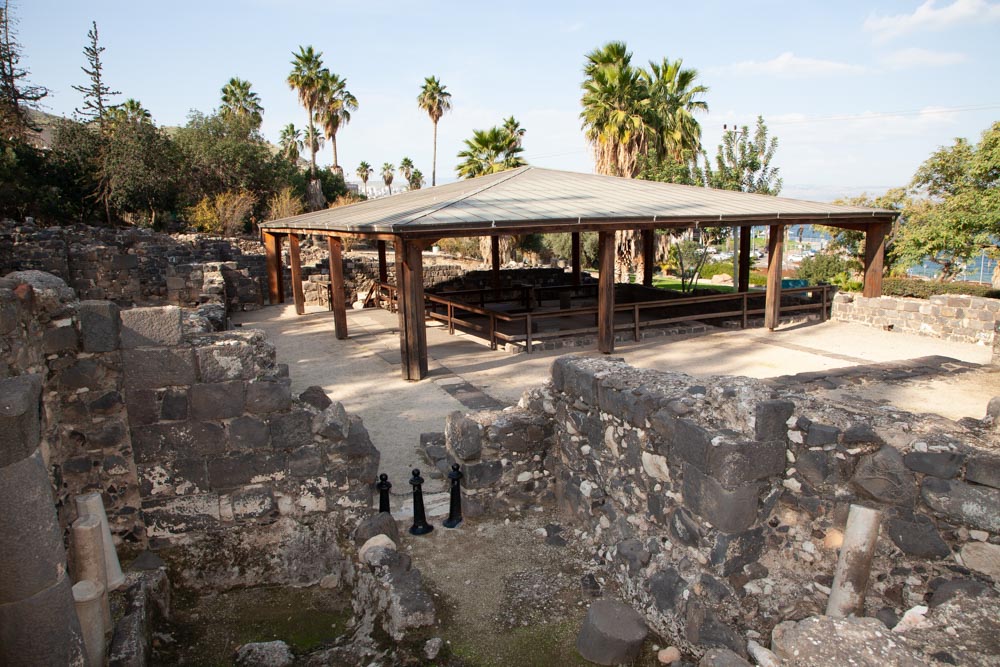The remains of Hammat Tiberias’s “Synagogue B”, or “Synagogue of Severus”, are adjacent to the southern city wall,within the national park and protected by a modern structure. Being the better known of the two, it is popularly simply referred to as the “Hammat Tiberias Synagogue”. It was excavated by Moshe Dothan in 1961-3, and is noted for its elaborate mosaic floor, dated to the second half of the fourth century CE, which makes them the earliest mosaic pavement found in a synagogue.
The archaeologists distinguished four stages of construction for the building: a 1st-century public building with rooms placed around a courtyard;a first synagogue was built around 230 CE and was apparently destroyed during the same century; a 4th-century synagogue (boasting the famous mosaic floor), apparently destroyed by an early-5th-century earthquake; and a much larger synagogue built in the 5th-6th centuries above the older one, and eventually destroyed in the 8th century.
















